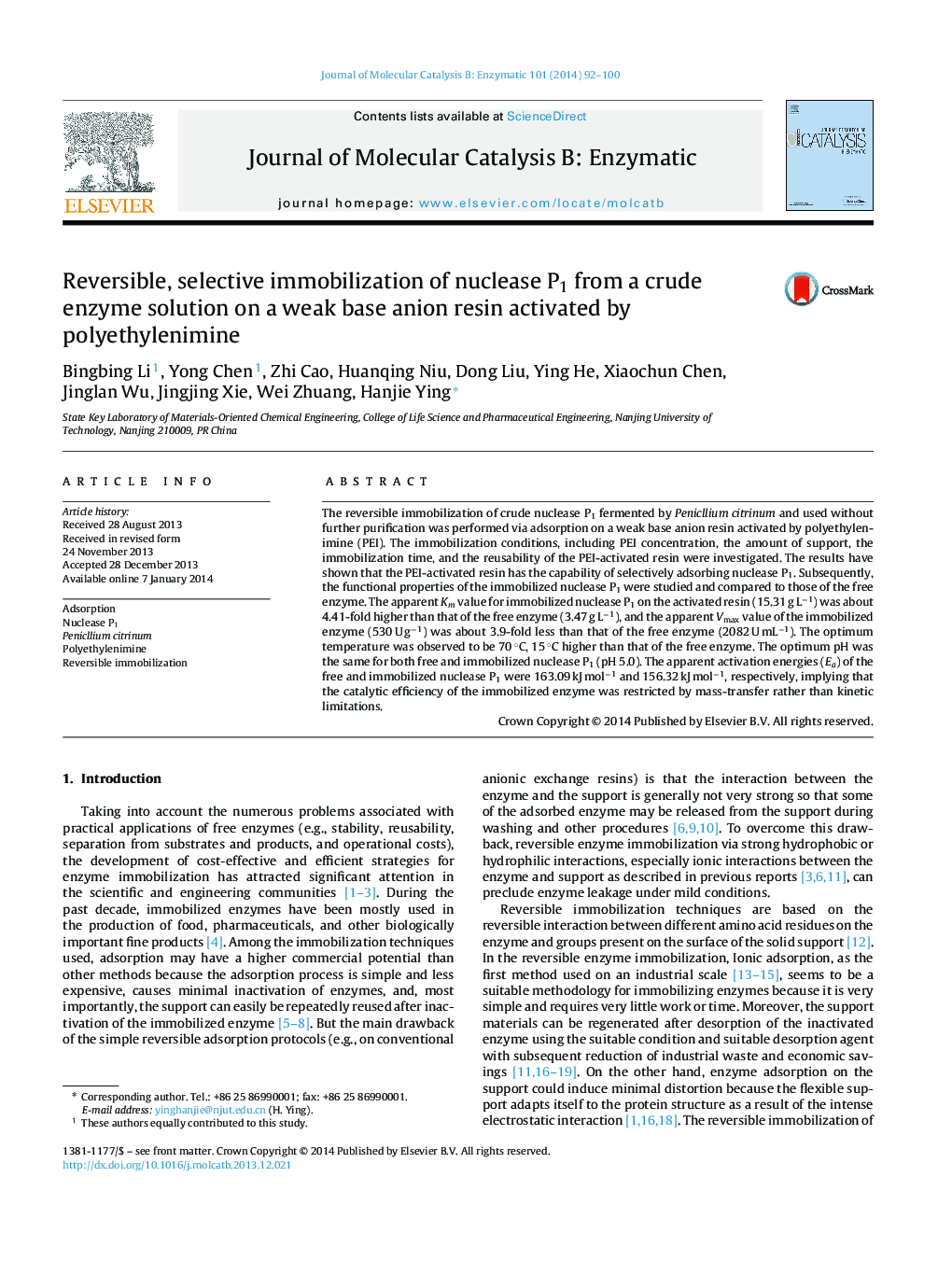| Article ID | Journal | Published Year | Pages | File Type |
|---|---|---|---|---|
| 69726 | Journal of Molecular Catalysis B: Enzymatic | 2014 | 9 Pages |
•Reversible immobilization of Nuclease P1 on PEI-activated resin.•Immobilization of crude nuclease P1 by selection adsorption.•Immobilization lowered the activation energy of enzyme.•The support could be regenerated after desorption of the inactivated enzyme.•The Immobilized enzyme enhanced the enzyme selectivity.
The reversible immobilization of crude nuclease P1 fermented by Penicllium citrinum and used without further purification was performed via adsorption on a weak base anion resin activated by polyethylenimine (PEI). The immobilization conditions, including PEI concentration, the amount of support, the immobilization time, and the reusability of the PEI-activated resin were investigated. The results have shown that the PEI-activated resin has the capability of selectively adsorbing nuclease P1. Subsequently, the functional properties of the immobilized nuclease P1 were studied and compared to those of the free enzyme. The apparent Km value for immobilized nuclease P1 on the activated resin (15.31 g L−1) was about 4.41-fold higher than that of the free enzyme (3.47 g L−1), and the apparent Vmax value of the immobilized enzyme (530 U g−1) was about 3.9-fold less than that of the free enzyme (2082 U mL−1). The optimum temperature was observed to be 70 °C, 15 °C higher than that of the free enzyme. The optimum pH was the same for both free and immobilized nuclease P1 (pH 5.0). The apparent activation energies (Ea) of the free and immobilized nuclease P1 were 163.09 kJ mol−1 and 156.32 kJ mol−1, respectively, implying that the catalytic efficiency of the immobilized enzyme was restricted by mass-transfer rather than kinetic limitations.
Graphical abstractFigure optionsDownload full-size imageDownload as PowerPoint slide
